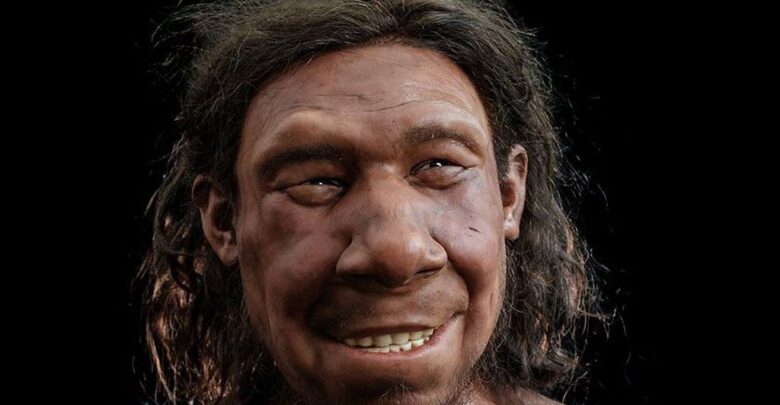

Starting with the fragment of a 70,000-year-old Neanderthal’s’ skull, experts have reconstructed the ancient human ancestor’s face — and even given him a toothy smile.
A 3.9- inch-by-2.3 inch skull fragment of the first Neanderthal in the Netherlands was presented at the National Museum of Antiquities in 2009 after it was found on the North Sea coast of Holland by an amateur paleontologist.
The skull fragment came from a young man of sturdy build who ate primarily meat and had a benign tumor that created a lump over his right eyebrow, researchers said.
Krijn, as researchers named the Neanderthal, is believed to be an inhabitant of Doggerland, a prehistoric landscape now submerged off the Dutch coast. As a result of its watery fate, Doggerland is sometimes called the Atlantis of the North Sea.
As sea levels were roughly 164 feet lower when Krijn lived, Doggerland was a cold plain that Krijn would have inhabited along with mammoths, reindeer and woolly rhinoceroses.

Palaeo artists Alfons and Adrie Kennis reconstructed Krijn’s face in detail. In a video about the reconstruction, Adrie Kennis said that Neanderthals had flat foreheads with prominent eyebrow ridges, protruding mid-faces and large noses and nostrils. Kennis did not explain why they chose to give Krijn a smile, which gives his teeth prominent display.
To reconstruct the primeval man’s face, the artists used a previously reconstructed French Neanderthal skull as their starting point. They then took digital matches from comparable Neanderthal skulls fragments to get an idea of what Krijn would have looked like. For all his similarities to others of his era, Krijn is the only Neanderthal found with a tumor/bruise on his brow.
The fossil and its smiley reconstruction will be on display until Oct. 31 as part of the “Doggerland” exhibit in the National Museum of Antiquities in Leiden, Netherlands. The exhibition tells the story “of almost one million years of human habitation of this rich, vast prehistoric landscape,” the museum’s website states.

In addition to Doggerland, Neanderthals were found across Europe and southwest and Central Asia. The species is named for the Neander Valley in the German state of North Rhine-Westphalia.
“We know more facts about Neanderthals than any other extinct humans,” human evolution expert professor Chris Stringer wrote on the website of London’s National History Museum. “Many thousands of their artifacts and fossils have been found, including several nearly complete skeletons.”
Edited by Matthew B. Hall and Judith Isacoff
The post VIDEO: Grin And Share It: Scientists Show How They Gave A 70,000-Year-Old Neanderthal His Smile appeared first on Zenger News.




